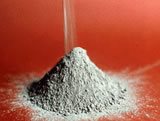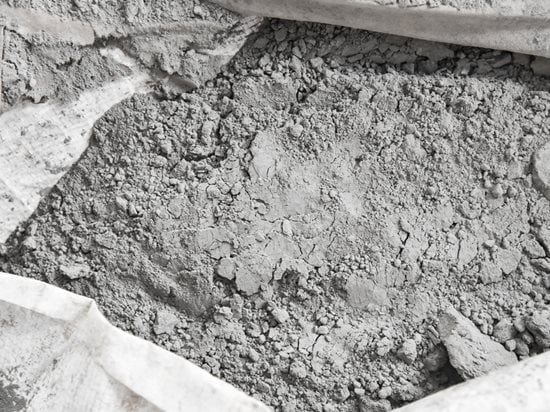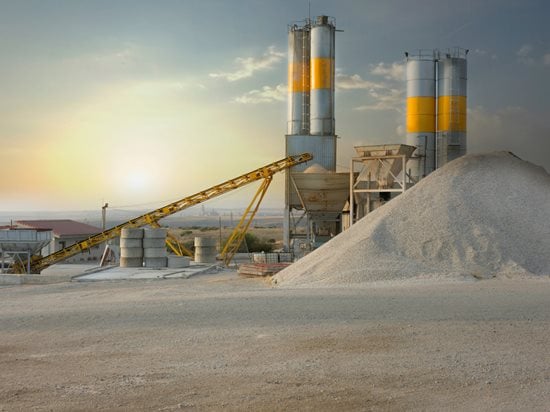- Ordering Ready Mix Concrete
- What is Concrete?
- What is Cement?
- Concrete Mix Design
- Hot Weather Concreting
- Cold Weather Concreting
- Related Information
- Materials: What goes into the mix
- Concrete admixtures: Tips for using in the concrete mix
- Figure out how much concrete you need: Use this concrete calculator
- Pricing concrete: Basic cost considerations
What is Cement?
Compare types of cement and their usesCement is a fine gray powder that is mixed with water and other substances to make mortar or concrete. It is a key building material in both residential and commercial construction work.
CEMENT VS. CONCRETE
The words cement and concrete are often used interchangeably. However, cement is actually an ingredient of concrete, not the final product. Cement is important becasue it binds, or holds, the concrete mix together, giving it strength. Learn more about the differences in this post: Cement vs Concrete.
Find concrete contractors near me.
TYPES OF CEMENT AND WHAT THEY DO
Portland Cement is a type of cement, not a brand name. Many cement manufacturers make Portland Cement. It is a basic ingredient of concrete, made using a closely controlled chemical combination of calcium, silicon, aluminum, iron and small amounts of other ingredients to which gypsum is added in the final grinding process to regulate the setting time of the concrete.
The Portland Cement Association's How cement is made provides detailed information of the process.
To find out more about what concrete is made of, concrete mix designs, admixtures, and water to cement ratios, read our section "What Is Concrete?"
 Portland Cement Association |
Type 1 - Normal portland cement. Type 1 is a general use cement.
Type 2 - Is used for structures in water or soil containing moderate amounts of sulfate, or when heat build-up is a concern.
Type 3 - High early strength. Used when high strength are desired at very early periods.
Type 4 - Low heat portland cement. Used where the amount and rate of heat generation must be kept to a minimum.
Type 5 - Sulfate resistant portland cement. Used where the water or soil is high in alkali.
Types IA, IIA and IIIA are cements used to make air-entrained concrete. They have the same properties as types I, II, and III, except that they have small quantities of air-entrained materials combined with them. Types IL, IS, IP and It are blended hydraulic cements that offer a variety of special performance properties.
These are very short descriptions of the basic types of cement. There are other types for various purposes such as architectural concrete and masonry cements, just to name two examples.
Your ready mix company will know what the requirements are for your area and for your particular use. Simply ask them what their standard type of cement is and if that will work fine for your conditions.
WATER TO CEMENT RATIO: THE #1 ISSUE AFFECTING CONCRETE QUALITY
A low water to cement ratio is the number one issue effecting concrete quality.
The ratio is calculated by dividing the water in one cubic yard of the mix ( in pounds) by the cement in the in the mix (in pounds). So if one cubic yard of the mix has 235 pounds of water and 470 pounds of cement- the mix is a .50 water to cement ratio.
If the mix lists the water in gallons, multiply the gallons by 8.33 to find how many pounds there are in the mix.
Low water cement ratio impacts all the desired properties of hardened concrete listed in desired properties of concrete.
Use a maximum .50 water to cement ratio when concrete is exposed to freezing and thawing in a moist condition or to deicing chemicals per the 1997 Uniform Building Code. (Table 19-A-2)
Use a maximum .45 water to cement ratio for concrete with severe or very severe sulfate conditions per the 1997 Uniform Building Code (Table 19-A-4)
Water permeability increases exponentially when concrete has a water cement ratio greater than .50.
Durability increases the less permeable the concrete mix is.
Strength improves with lower water cement ratios. A .45 water cement ratio most likely will hit 4500 psi (pounds per square inch) or greater. A .50 water cement ratio will likely reach 4000 psi or greater.
For complete Uniform Building Code information regarding concrete construction, review with your architect, your ready mix supplier, or at your local library.






